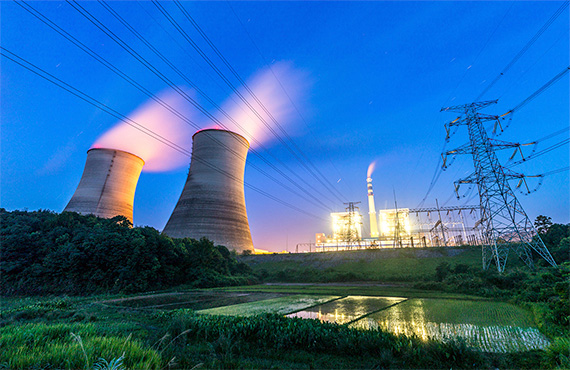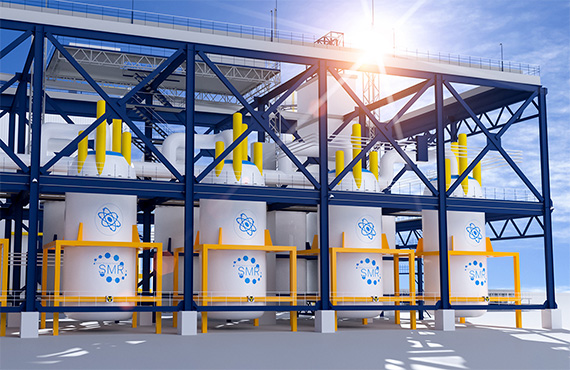
Artificial intelligence (AI) is transforming industries rapidly, but it consumes a tremendous amount of energy, raising concerns about sustainability.
Nuclear power plants offer a reliable, low-carbon option to meet these needs. Let’s explore how nuclear power supports AI and sustainability. This article examines the role of nuclear power plants in powering AI, their energy output, water use, and why they're suitable for sustainable AI data centers.
What Are Nuclear Power Plants?
Nuclear power plants generate electricity through nuclear fission, where atoms split to release heat. This heat produces steam, which drives turbines to generate power. Unlike fossil fuel plants, nuclear power emits minimal greenhouse gases, making it a cleaner option. According to the U.S. Energy Information Administration, nuclear energy provides around 10 percent of global electricity, with 93 reactors operating in the U.S.
Nuclear power plants are designed to be reliable, operating 24/7 with refueling every 18–24 months. They support energy-intensive industries, including AI data centers, where steady power is essential. Proconex's expertise in industrial automation, including VisionAI, complements the need for efficient energy systems for AI infrastructure.
Why Nuclear Power for AI Data Centers?
AI data centers use a massive amount of energy for complex computations and cooling. In fact, a single data center can consume as much electricity as a small city, putting a strain on power grids that rely on fossil fuels. However, nuclear power plants offer a stable, low-carbon alternative. The International Energy Agency notes that data center energy use could double by 2026, prompting companies to seek sustainable solutions like nuclear power.
Nuclear energy has a high output with minimal land use compared to solar or wind power. A single reactor can power millions of homes or several AI data centers. Companies like Microsoft and Google are exploring nuclear power plants for AI data centers to meet their carbon-neutral goals. Proconex supports this shift with automation solutions to optimize energy use in data-heavy environments.

How Much Energy Does a Nuclear Power Plant Produce?
A typical nuclear power plant in the U.S. has a capacity of about 1,000 megawatts (MW), generating around 8 billion kilowatt-hours (kWh) each year. This amount is enough to power 800,000 homes or multiple AI data centers running 24/7. To put this into perspective, training a large AI model like GPT-3 can require hundreds of megawatt-hours, making nuclear power an ideal choice for sustainable AI.
Small modular reactors (SMRs), an emerging technology, offer 50–300 MW per unit, making them suitable for local data centers. These reactors can be built faster and are safer, with designs like NuScale’s approved by the NRC. These advancements make nuclear power plants a flexible option for AI energy needs, aligning with Proconex’s focus on innovative energy solutions.
Is Nuclear Power Renewable?
Nuclear power is not renewable because it relies on uranium, a limited resource. However, it is a low-carbon energy source, producing nearly zero CO2 during operation, as noted by the World Nuclear Association. Uranium reserves can last for centuries, and technologies like fast reactors could recycle fuel, extending supply. Thorium-based reactors, still in research, offer another long-term option.
For AI and sustainability, nuclear energy outperforms fossil fuels and works well with renewables like solar, which depend on weather. Data centers need constant power; nuclear power plants provide this reliability, reducing dependence on coal or gas. Proconex’s automation tools, like VisionAI, help improve energy efficiency, enhancing nuclear’s role in sustainable AI.
How Much Water Does a Nuclear Power Plant Use?
Nuclear power plants use water to cool reactors and condense steam. A typical plant withdraws 20–60 billion gallons annually, but most is returned to the source, according to the U.S. Geological Survey. Consumption averages 700 million gallons yearly—less than coal plants but more than wind or solar. Advanced cooling systems, like dry cooling, cut water use but cost more.
For nuclear power plants serving AI data centers, water use is important, especially in drought-prone areas. SMRs use less water due to their smaller size, making them viable for sustainable AI infrastructure. Proconex’s expertise in process optimization helps minimize resource use, supporting AI and sustainability goals.

Challenges and Considerations
While nuclear power plants excel in reliability, challenges exist. High upfront costs, around $6–9 billion per reactor, can deter investment, according to the World Nuclear Association. Regulatory approvals can take years, though SMRs simplify this. Waste management needs secure storage, handled by deep geological repositories, as outlined by the NRC. Public concerns about nuclear safety, shaped by incidents like Fukushima, require transparency. The industry has improved this through strict oversight.
For AI nuclear power, these hurdles are offset by long-term benefits. A single plant can run for 60–80 years, providing stable power for AI data centers. Proconex’s automation solutions, including VisionAI, enhance safety and efficiency, reducing operational risks in nuclear-powered AI facilities.
The Role of Nuclear in AI Sustainability
AI and sustainability depend on cutting carbon footprints. Nuclear power plants produce just 10 grams of CO2 per kWh, compared to coal’s 800 grams, according to the World Nuclear Association. This makes nuclear energy vital for carbon-neutral AI. Tech companies are investing in nuclear power plants for AI data centers, seeing their potential to meet energy needs without emissions.
Nuclear power also stabilizes power grids, supporting AI’s growth without overloading infrastructure. In regions with limited renewable capacity, nuclear fills the gap, ensuring data centers run sustainably. Proconex’s automation expertise, shown in our AI solutions, optimizes these systems, cutting energy waste and boosting performance.
Future Outlook
The future of AI nuclear power looks promising. The U.S. Department of Energy backs nuclear energy for data centers, funding the development of small modular reactors (SMRs). France and China are increasing their nuclear capacity, setting a precedent for AI integration. Innovations like fusion energy, although still years away, could further boost nuclear energy's role in AI and sustainability.
Proconex is ready to support this shift, offering automation and AI solutions to optimize nuclear-powered AI facilities. Our solutions ensure safety, efficiency, and compliance, paving the way for a sustainable AI future.
People Also Ask
Plants use around 700 million gallons annually, with most of it being returned, based on USGS data.
Nuclear power plants provide reliable, low-emission energy for AI data centers, supporting AI and sustainability, according to the IEA.
